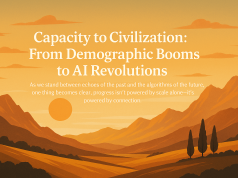As the dawn of remote work continues to cast its long shadow across the corporate world, New York City – a bustling hub of commerce and innovation – finds itself at an inflection point. The once teeming office towers that defined its skyline are now grappling with a transformative question: What is the role of the physical office in a world that increasingly values digital presence over geographic location?
The answer is not merely academic; it is reshaping the very fabric of the city. The New York Times readership, a demographic synonymous with informed perspectives and high standards, observes these changes with keen interest. The workplaces they envision for tomorrow are not the cubicle-laden landscapes of yesteryear but environments that reflect the evolving ethos of flexibility, collaboration, and work-life integration.
Businesses, in response, are reimagining their spaces. Some have opted to downsize, repurposing vast floors of desks into more dynamic, multi-use areas. Others are contemplating a more radical shift, questioning if a central office is necessary at all. These decisions ripple across the commercial real estate market, prompting a reevaluation of property values and a renaissance in urban design focused on residential and mixed-use spaces. It’s a move that could alter the very function of a city renowned for its commercial prowess.
Architects are also at the drawing board, innovating designs that foster collaboration and creativity while ensuring health and wellness. They speak of ‘activity-based workspaces’ – areas crafted for specific tasks, be it brainstorming, focused work, or casual interactions. This architectural alchemy is not just about space utilization; it’s about cultivating an atmosphere that enhances productivity and employee satisfaction.
Business leaders weigh in on this transformation, considering how physical spaces can embody company culture and values. They recognize that an office can provide more than a place to work—it can be a hub for mentorship, a beacon for recruitment, and a tangible manifestation of a company’s brand.
Employees, for their parts, express a desire for flexibility. The traditional 9-to-5 at a fixed desk doesn’t align with modern lifestyles or the manner in which many now prefer to accomplish their tasks. For them, the office of the future is a destination for collaboration and socialization, not the mandated daily grindstone.
What, then, does this mean for New York City? The metropolis may see a reduction in the sheer volume of office space, a diversification of land use, and perhaps a more vibrant, community-driven urban ecosystem. This evolution promises to have profound socio-economic implications, potentially democratizing space, revitalizing neighborhoods, and even influencing the city’s competitive edge.
As the world peers into the crystal ball of New York’s future, it sees an office landscape vastly different from the one known today. Companies and employees alike navigate this transition, aiming to strike a balance between the virtual and the physical, the individual and the collective. In doing so, they are not just redefining the modern workplace; they are taking an active role in shaping the socio-economic destiny of one of the world’s most iconic cities.
In conclusion, New York stands at the crossroads, and the path it chooses will serve as a beacon for others to follow. As The Work Times, we pledge to continue documenting this journey, sharing insights, and sparking conversations around the future of work, one innovative step at a time.



























